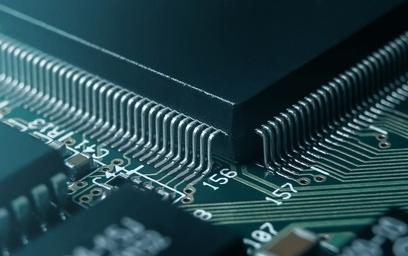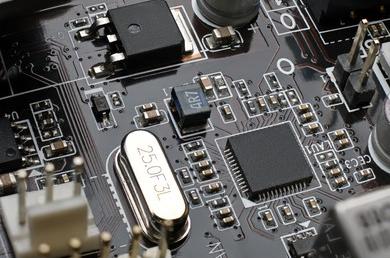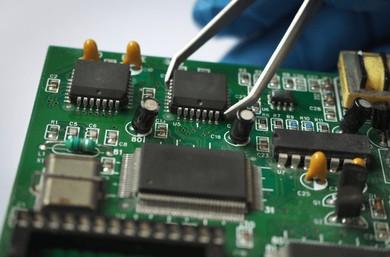Content Menu
● Improper Component Placement
>> Causes:
>> Solutions:
● Solder Bridging
>> Causes:
>> Solutions:
● Component Misalignment
>> Causes:
>> Solutions:
● Insufficient Solder Joints
>> Causes:
>> Solutions:
● Tombstoning
>> Causes:
>> Solutions:
● Conclusion
● FAQ
>> 1. What is surface mount assembly placement?
>> 2. Why is proper component placement important?
>> 3. How can solder bridging be prevented?
>> 4. What causes tombstoning in surface mount assembly?
>> 5. What are the benefits of using AOI systems?
Surface mount assembly placement is a pivotal process in the realm of electronics manufacturing. This technique allows for the efficient and precise mounting of electronic components directly onto the surface of printed circuit boards (PCBs). However, despite its advantages, several common mistakes can occur during this process, leading to defects that compromise the functionality and reliability of the final product. In this article, we will delve into these common mistakes, their causes, and effective solutions to ensure successful surface mount assembly placement.

Improper Component Placement
One of the most prevalent errors in surface mount assembly placement is improper component placement. This mistake can manifest as misaligned or incorrectly oriented components, which may lead to short circuits, signal interference, and mechanical stress on the components.
Causes:
- Inaccurate settings on pick-and-place machines.
- Insufficient inspection procedures.
- Misinterpretation of design documentation.
Solutions:
- Utilize advanced pick-and-place machines equipped with vision systems to ensure precise alignment.
- Conduct regular maintenance and calibration of equipment to maintain accuracy.
- Implement stringent quality control measures, including thorough visual inspections before and after assembly.
Solder Bridging
Solder bridging occurs when excess solder creates an unintended conductive path between adjacent pads on a PCB. This can result in short circuits that severely affect circuit performance.
Causes:
- Over-deposition of solder paste during the printing process.
- Misalignment of stencil apertures relative to PCB pads.
- Inadequate reflow soldering profiles that do not properly melt and solidify solder.
Solutions:
- Optimize solder paste stencil design to ensure proper deposition amounts.
- Adjust stencil aperture dimensions to reduce excess solder by approximately 10%.
- Ensure precise alignment of stencil apertures to PCB pads to prevent bridging.

Component Misalignment
Component misalignment during assembly can lead to poor electrical connections and increased mechanical stress on components, potentially causing failures.
Causes:
- Unstable clamping of PCBs during the assembly process.
- Excessive pressure applied during component placement.
- Errors in placement coordinates specified in design files.
Solutions:
- Employ stable PCB clamping systems that secure the board firmly during assembly.
- Verify placement accuracy against design documentation before finalizing placements.
- Regularly calibrate pick-and-place equipment to enhance precision.
Insufficient Solder Joints
Insufficient or poorly formed solder joints can lead to electrical opens (disconnections) and mechanical failures in the assembled PCB.
Causes:
- Inadequate solder paste deposition resulting from improper printing techniques.
- Contaminated solder paste that affects adhesion and flow.
- Incorrect reflow profiles that do not adequately heat solder joints.
Solutions:
- Maintain optimal ratios of metal to flux in solder paste formulations.
- Avoid environmental extremes such as high humidity or temperature fluctuations during manufacturing.
- Implement automated optical inspection (AOI) systems to detect insufficient solder joints early in the process.
Tombstoning
Tombstoning is a defect where one end of a component lifts off the PCB, resembling a tombstone. This issue typically arises during the reflow soldering process.
Causes:
- Uneven heating across the PCB during reflow.
- Imbalanced forces acting on components due to uneven solder distribution.
- Excessive movement or vibration during the reflow process.
Solutions:
- Ensure even heat distribution across all components during reflow by optimizing oven profiles.
- Minimize movement during reflow by securing PCBs adequately and controlling environmental conditions.
- Maintain high placement accuracy so that components cover at least 50% of both pads on either side.
Conclusion
Surface mount assembly placement is a complex yet crucial aspect of electronics manufacturing that demands meticulous attention to detail. By understanding common mistakes such as improper component placement, solder bridging, insufficient solder joints, and tombstoning, manufacturers can significantly enhance the quality and reliability of their PCBs. Implementing advanced technologies, conducting regular equipment maintenance, and adhering to stringent quality control measures are essential strategies for achieving defect-free surface mount assembly placement.
In summary, addressing these common mistakes not only improves product quality but also reduces costs associated with rework and failure analysis, ultimately leading to greater customer satisfaction and trust in electronic products.

FAQ
1. What is surface mount assembly placement?
Surface mount assembly placement refers to the process of mounting electronic components directly onto the surface of a PCB using automated machines designed for precision.
2. Why is proper component placement important?
Proper component placement is critical because it ensures reliable electrical connections, prevents short circuits, and minimizes mechanical stress on components which could lead to failures.
3. How can solder bridging be prevented?
Solder bridging can be avoided by optimizing stencil design for accurate paste deposition, ensuring proper alignment between stencil apertures and pads, and maintaining appropriate reflow profiles.
4. What causes tombstoning in surface mount assembly?
Tombstoning is primarily caused by uneven heating during reflow soldering, imbalanced forces due to improper component orientation or placement before reflow, and excessive movement during the process.
5. What are the benefits of using AOI systems?
Automated Optical Inspection (AOI) systems enhance defect detection capabilities, improve overall quality control processes, reduce manual inspection efforts, and increase production efficiency by identifying issues early in the assembly line.




















